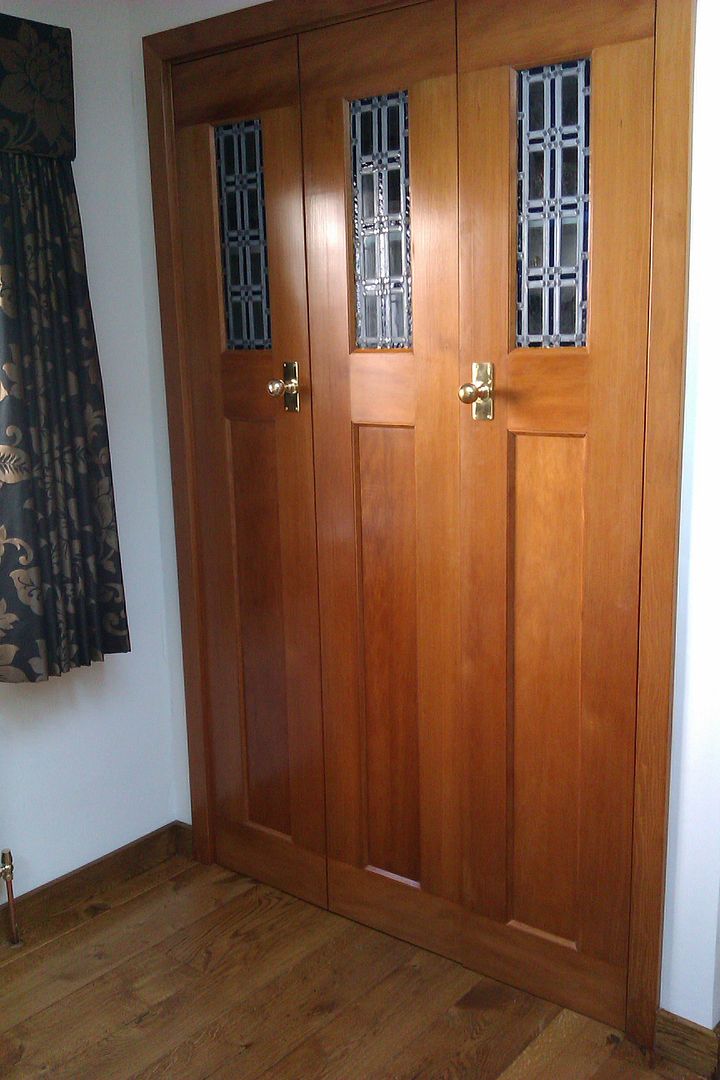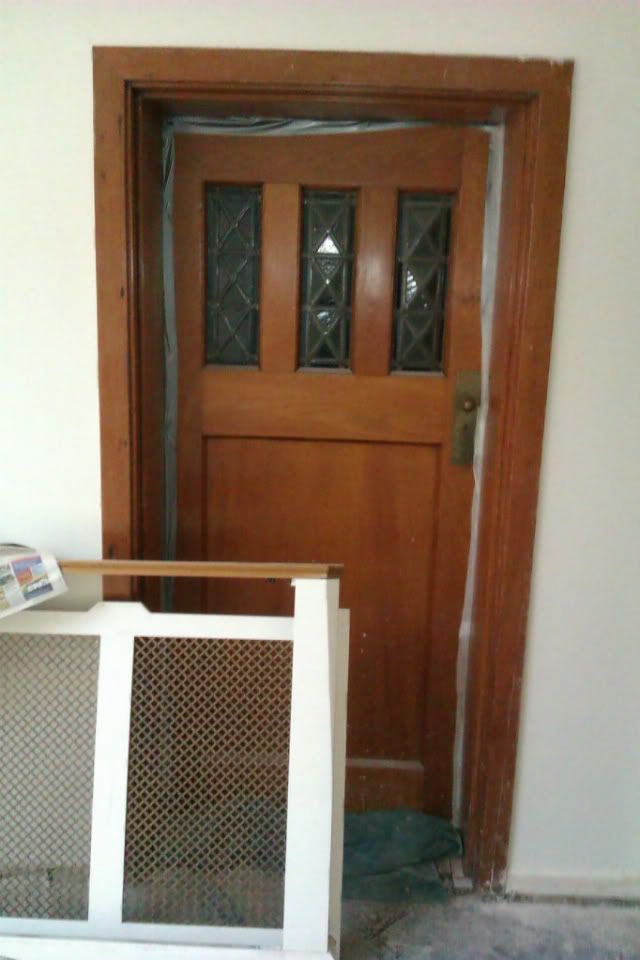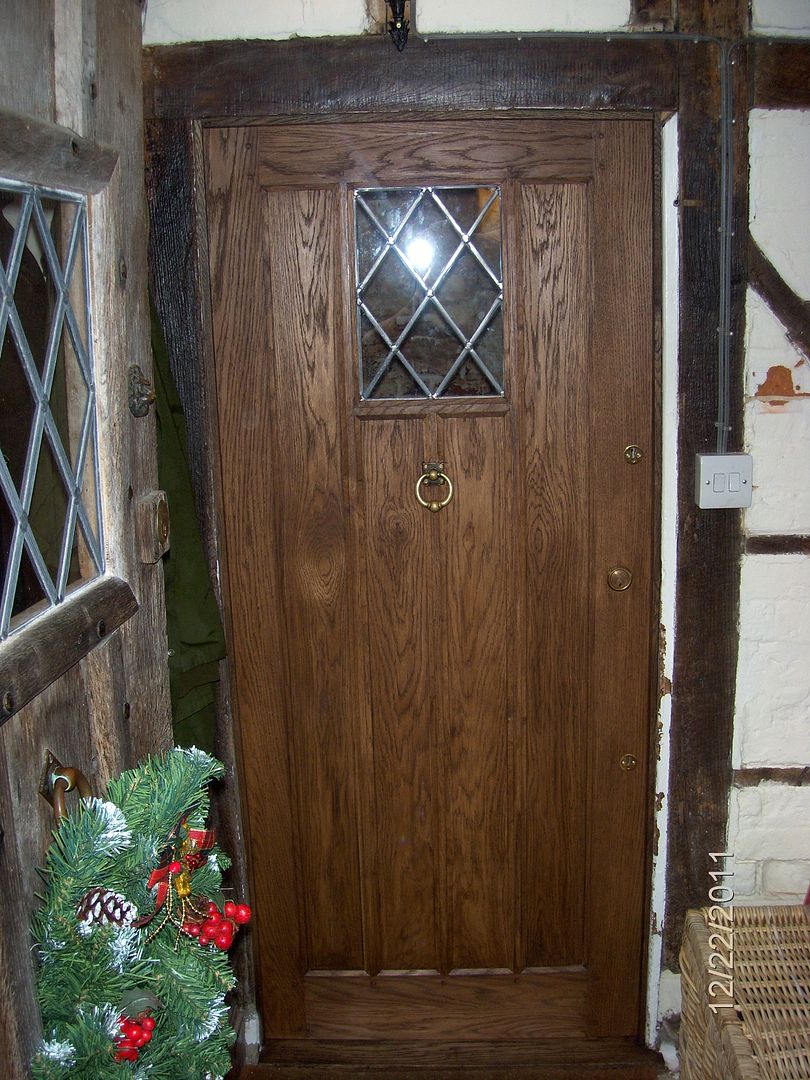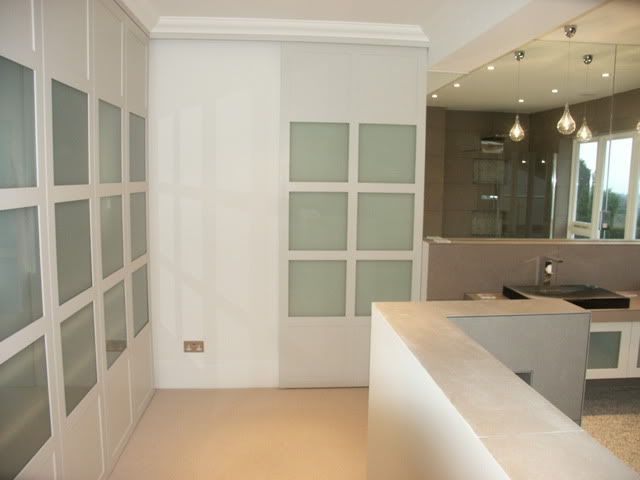Milling machine as a morticer?
| john carruthers | 20/04/2015 08:38:48 |
617 forum posts 180 photos | Totally agree pgk, had Chippendale access to modern glues and finishes he would have used them in an instant. |
| JasonB | 20/04/2015 09:06:18 |
25215 forum posts 3105 photos 1 articles | If it won't fit in my small morticer I always drill out the waste and clean it up by hand or if there are a few the same will knock up a jig for the router. The last few internal doors that I have done which had a painted finish I built them up from 3 layers of MDF, no risk of the infill panels moving, same with the bottom & mid rails and as teh central sheet is solid the joints won/t sag as it braces itself. |
| Jon Gibbs | 20/04/2015 10:42:43 |
| 750 forum posts | I think it all depends on how big the mortices are and what timber you're using. If it's oak or anything with a lot of tannin or you are cutting a lot of 'em then by all means use your milling machine but you certainly ain't using mine Small mortices are almost easier and quicker cut by hand with a decent mortice chisel and a bfm (as opposed to bfh Big through mortices for door stiles are much easier drilled and then squared up but concentrate on keeping the drilling spot-on to make cleaning up easier. Very few routers or cheap mortice attachments will plunge deep enough anyway to go all the way through a 4 or 6 inch stile. Square cornered tenons have been shown to be stronger than rounded end ones. So squaring up is always better if you can. Contrary to what's been said hide glues are still the best for furniture you want to last IMHO. So it's horses for courses. You can mend broken joints much easier with hide glues than modern ones. Just warm up the joint and it can be separated and the old glue doesn't need to got rid of entirely before the next glue-up. Try that with epoxy or PVA. They don't like being applied on top of old glue even if you've been extremely lucky and been able to disassemble a joint without knackering the original mortice. Jon
Edited By Jon Gibbs on 20/04/2015 10:49:15 |
| KWIL | 20/04/2015 11:01:09 |
| 3681 forum posts 70 photos | I still cut mortice and tenon joints by hand and chisel, also use urea formaldehyde glue (aerolite) which ensures you do not get knackered joints. Certainly old style glue joints have to be repaired with the same hide type glue to ensure compatability. |
| Robin Graham | 20/04/2015 19:14:13 |
| 1089 forum posts 345 photos | This thread is perhaps straying into territory more appropriate for woodworking forum, but thanks for all the further contributions anyway. I have used my little mill for routing wood in the past, I actually haven't found the wood chips much of a problem - a decent extraction hose positioned near the cutter seems to clear most, and anything that escapes can easily be vacuumed up if the machine is dry. pgk - I take your points entirely - I'm not obsessed with using Georgian techniques, or living a Georgian lifestyle (can' t get decent staff nowadays anyhow) - good Lord, I've even taken out the lead piping for the gas lighting, we use this leckertricity thing. Devil of a job finding authentic Georgian power sockets and light switches though I think that my original question has been answered - it is entirely feasible to adapt a milling machine to cut mortices using morticing chisels provided I'm willing to put up with the strain on the rack and pinion and the wood chippings. Jason, I'm interested in your method of making doors by laminating MDF - not appropriate for this project as they will have an oil/wax finish, but maybe for something else I have in mind. Be interested in more detail of how this is done (specifically how the panels are formed) , but maybe more appropriate for UKW than here. Regards, Robin
|
| JasonB | 20/04/2015 19:49:58 |
25215 forum posts 3105 photos 1 articles | You will probably find them somewhere on UKW, don't post there much now but used to be as active there as I am here now, only just over 5000posts to look through!! You can always cut your own veneers from timber reclaimed from your house and stick that to a bit of MDF, these three were done that way with a couple of lengths of cladding off a beam cut very thin
Tried to match this ones with the glass out of the old front door
Or if you want to add insulation the 4 central panels on this one are bandsawn veneers onto marine ply with bandsawn celotex insulation in the middle of the sandwich, moulding applied ontop.
This 2700x 1000 sliding door is a single large press sheet of MDF with assitional strips each side to form teh shaker panels, larger one side to also form the glass rebate. The wardrobe doors you should find my loose tongue method on UKW for how they are made
As does this 7'6" door for the same client reusing glass from a room divider
I usually use Medite Premier as the central panel as its quite light weight and MR MDF for the outer layers as it takes a better finish, structural veneer or bandsawn veneer to the edges and bond in some hardwood blocks below the surface to take the hinges. You can also cut a bit out for the lock before you bond the layers to save having to chop out a mortice.
|
Please login to post a reply.
Want the latest issue of Model Engineer or Model Engineers' Workshop? Use our magazine locator links to find your nearest stockist!
Sign up to our newsletter and get a free digital issue.
You can unsubscribe at anytime. View our privacy policy at www.mortons.co.uk/privacy
- hemingway ball turner
04/07/2025 14:40:26 - *Oct 2023: FORUM MIGRATION TIMELINE*
05/10/2023 07:57:11 - Making ER11 collet chuck
05/10/2023 07:56:24 - What did you do today? 2023
05/10/2023 07:25:01 - Orrery
05/10/2023 06:00:41 - Wera hand-tools
05/10/2023 05:47:07 - New member
05/10/2023 04:40:11 - Problems with external pot on at1 vfd
05/10/2023 00:06:32 - Drain plug
04/10/2023 23:36:17 - digi phase converter for 10 machines.....
04/10/2023 23:13:48 - More Latest Posts...
- View All Topics
- Reeves** - Rebuilt Royal Scot by Martin Evans
by John Broughton
£300.00 - BRITANNIA 5" GAUGE James Perrier
by Jon Seabright 1
£2,500.00 - Drill Grinder - for restoration
by Nigel Graham 2
£0.00 - WARCO WM18 MILLING MACHINE
by Alex Chudley
£1,200.00 - MYFORD SUPER 7 LATHE
by Alex Chudley
£2,000.00 - More "For Sale" Ads...
- D1-3 backplate
by Michael Horley
Price Not Specified - fixed steady for a Colchester bantam mark1 800
by George Jervis
Price Not Specified - lbsc pansy
by JACK SIDEBOTHAM
Price Not Specified - Pratt Burnerd multifit chuck key.
by Tim Riome
Price Not Specified - BANDSAW BLADE WELDER
by HUGH
Price Not Specified - More "Wanted" Ads...
Do you want to contact the Model Engineer and Model Engineers' Workshop team?
You can contact us by phone, mail or email about the magazines including becoming a contributor, submitting reader's letters or making queries about articles. You can also get in touch about this website, advertising or other general issues.
Click THIS LINK for full contact details.
For subscription issues please see THIS LINK.
Model Engineer Magazine
- Percival Marshall
- M.E. History
- LittleLEC
- M.E. Clock
ME Workshop
- An Adcock
- & Shipley
- Horizontal
- Mill
Subscribe Now
- Great savings
- Delivered to your door
Pre-order your copy!
- Delivered to your doorstep!
- Free UK delivery!

 Clearing up and stopping any corrosion if there's any oil in the vicinty is a real PITA.
Clearing up and stopping any corrosion if there's any oil in the vicinty is a real PITA.














 Register
Register Log-in
Log-in


